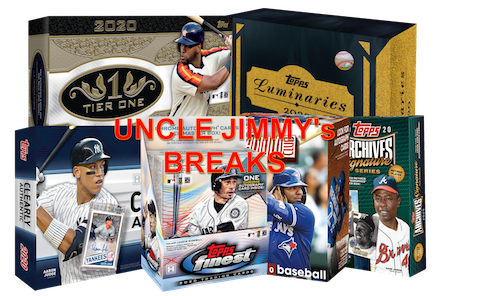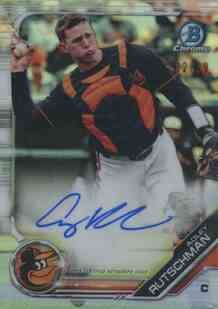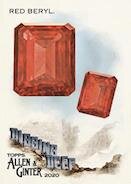Over the past decade, breaking sports cards has exploded in popularity, along with the card collecting hobby in general. Nowadays, it seems like everyone is breaking cards. Most local card shops are breaking, some to the point where it has become their main income stream and they’re probably considering ditching their brick and mortar establishments (if they haven’t already).
Often, collectors that are participating in others’ breaks come to realize that they have enough friends and acquaintances that they can start their own breaking operation. Next thing you know, little Timmy down the street and your Uncle Jimmy in Florida have started breaking cards too.
What is a Break
Questions I regularly get when people are getting back into the hobby or starting to collect for the first time is “What are breaks?” and “How do breaks work?”.
For the most simplistic example, if a breaker has a $300 box, then prices each team at $10, and sells one of the thirty teams to 30 different people, their break is sold out and they are ready to “break” aka open the box.
The breaker opens all the packs in the box, typically live-streaming the opening, and every card goes to the purchaser of the team shown on each card. That example leaves out a lot of details, so let’s dive into some of those details.
Types of Breaks
With the popularity of card breaks, the types of breaks out there are almost anything you can dream up. For this discussion, I will give some basic breakdowns of the more popular variants out there:
PYT: The classic break is the Pick Your Team (PYT) break alluded to in the above example. You purchase a single team in the break and get all the cards that have that team on the card.
PYP: Another variant of the PYT you will occasionally see is the Pick Your Player (PYP) where each player in the checklist is sold a single spot. This is most often seen with Bowman Baseball and Bowman Draft products and usually only done close to the release day as the hype drives a lot of interest. This is a type of break I would only recommend for more experienced breakers.
Random/Drafted Breaks: While the PYT is the more classic style of breaks, by far the most common type of break you will find are the non-PYT’s. Most times you will hear them just referred to generically as “breaks” if it is a single product (e.g. 3 boxes of Bowman Draft, etc.) or a “mixer” if it is a combination of products (e.g. 1 box of Bowman Draft, 1 box of Bowman Baseball, 1 box of Bowman Chrome). Spots in these breaks are usually sold as a single team spot (30 spots) or a three-team spot (10 spots), although you will occasionally find other combinations. Since you are not buying a team but rather a spot, the way teams are determined for the spot purchasers is either through randomizing the teams or through a draft, usually snake style (spot purchasers are randomized for the draft order).
Pack Breaks: Pack breaks are popular with products like Panini Stars and Stripes USA Baseball because the checklist is almost always populated with players that are not on professional teams. That makes it relatively impossible to sell the traditional team or spot setup. Stars and Stripes comes with five packs per box, and each pack contains at least 1 hit (autographed or memorabilia card). All five spots, or packs, are sold at the same price and then opened for the spot purchasers - this is essentially identical to the traditional buying packs at the local card shop.
Hit Breaks: Hit breaks are popular with more expensive products where every card is a hit like in Topps Definitive baseball where a box contains eight hit cards and nothing else (6 autographed cards and 2 memorabilia cards). Eight spots are sold and then the eight spot purchasers are either given a random card or randomized for a draft of the eight cards after the pack has been opened.
Serial Number Breaks: Serial Number breaks are similar to hit breaks in that they are often found in the more expensive products like Topps Definitive where most to all cards are a hit and every card is numbered to 99 or less. Essentially you are randomized or drafting a serial number or set of serial numbers and get all cards with that number.
Razz Breaks: Essentially a raffle. For example, there are 30 spots in the break, 100 razz spots are sold, and the top 30 that come out in the randomizer get a spot in the break. It’s a way to get a much cheaper shot at a break, but it’s a way to get skunked without even being in the break.
Personal Breaks: A fair amount of breakers offer the ability to purchase a box or multiple boxes all for yourself, referred to as a Personal break or just Personals. This is especially convenient when products are hard to come by for any number of reasons.
Box Wars: See my article on Box Wars here
The Fine Print
Now that we have gotten through the majority of the types of breaks out there, we can take a look at some of the other scenarios you may encounter during a break. Always find out how a breaker handles the below situations as each one will handle it in their own way.
Multi-Player Cards: A fair amount of products will have cards with multiple players on them, and sometimes those players are from different teams. If those teams belong to different spot owners, you can’t really cut the card in half and send each half to the respective owner. The most common way to handle this is that the breaker will random the card among the spot owners for each team on the card to determine who wins the card.
Teams of Yesteryear: The next scenario is for teams that have moved/changed into new teams. If a card from the Expos is hit the card will go to the owner of the Washington Nationals in that break.
No Team Specified: On the opposite end of the spectrum, you will find cards that don’t specify a team or location. This is almost always seen with Leaf cards as they are not licensed by the MLB or the MLBPA. This causes problems when a player has been traded while a product is in the middle of coming out, such as Will Wilson (Angels to Giants) this past off-season and Jarred Kelenic (Mets to Mariners) the previous off-season. Most breakers will designate a team for those players from each product (all Kelenics from this product go to the Mets) or use a well known checklist site as the deciding factor for player-team assignment such as groupbreakchecklists.com.
Non-MLB team: Similar to “no team specified”, there are products that are part of breaks that have non-MLB team based players. Anything from International players, Team USA players, or even non-sports cards in products like Allen & Ginter (such as the digging deep subset in this year’s edition). The standard ways to handle these scenarios are to include additional slots for purchase/drafting for these non-MLB cards or do a random at the end of the break to allocate the cards among the spot purchasers.
Combining Teams: The next thing you will see is when products that have teams with a disproportionately low amount of hits/cards, breakers will decide to combine teams into a single spot.
Excluding Teams: There may be products that have no hits and possibly no base cards of a team, like the Washington Nationals in 2019 Bowman Draft. In that case, breakers should and do remove the Nationals as an available team for purchase or drafting.
How to get into a Break
Breaking is everywhere - you can find breakers on Youtube, Twitch, Twitter, Facebook, and probably Tik Tok for all I know. As you dip your toe into the breaking world, start with some of the bigger, more well known breakers out there, or find somebody you trust already into breaking that can point you to a reliable place. Each breaker has their own specific way of doing things in regard to reserving a spot/buying into a break - don’t hesitate to ask as most breakers are more than helpful in getting you into their breaks.
First Time Breaking
When trying out breaking for the first time, I would suggest a Pick Your Team (PYT) or a Random/Drafted break as the place to get started. Those tend to be the least complicated and are the easiest ones to find across the majority, if not all, breakers. If you have any questions about which breaks to join, any topics in this article, or just baseball cards in general join the Prospects Live Discord and head over to the Baseball Channel.
Just do it do it do it
Breaks are a great addition to the card collecting world that I would recommend everyone try at least once. It gives you the opportunity to get exposure to products and cards you may never have had a chance at otherwise.
In addition, I always suggest making fun and enjoyment the primary reason why you try breaking. That helps you avoid getting caught up in the ROI and potentially letting a lack of return ruin your experience. In card breaks, just as in life, sometimes Lady Luck is on your side and sometimes she is not - and those, ladies and gentleman, are the breaks.










